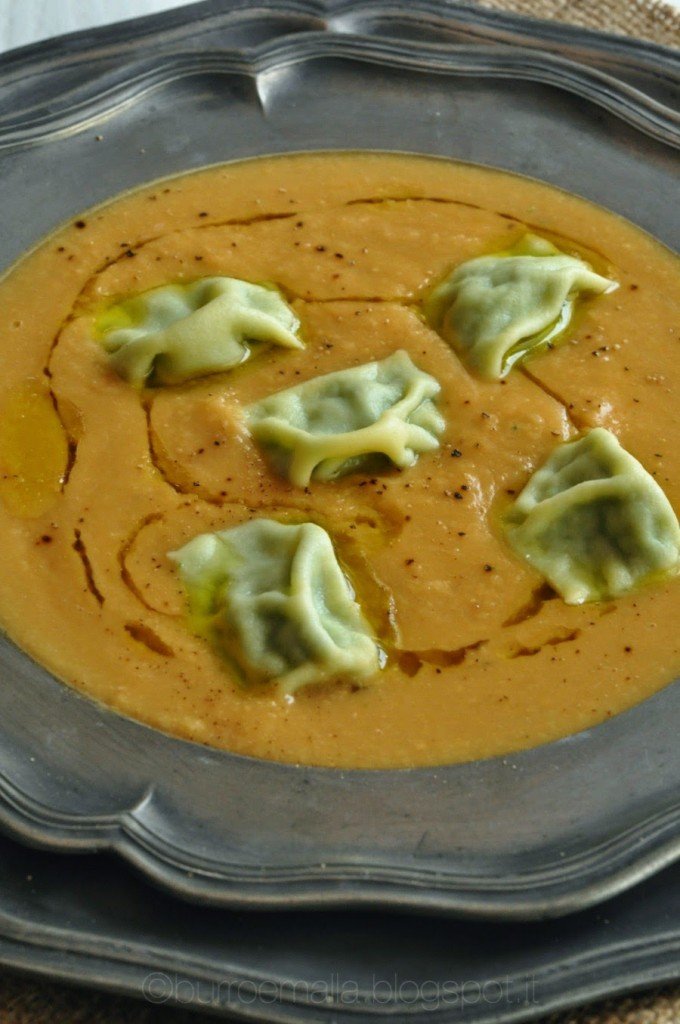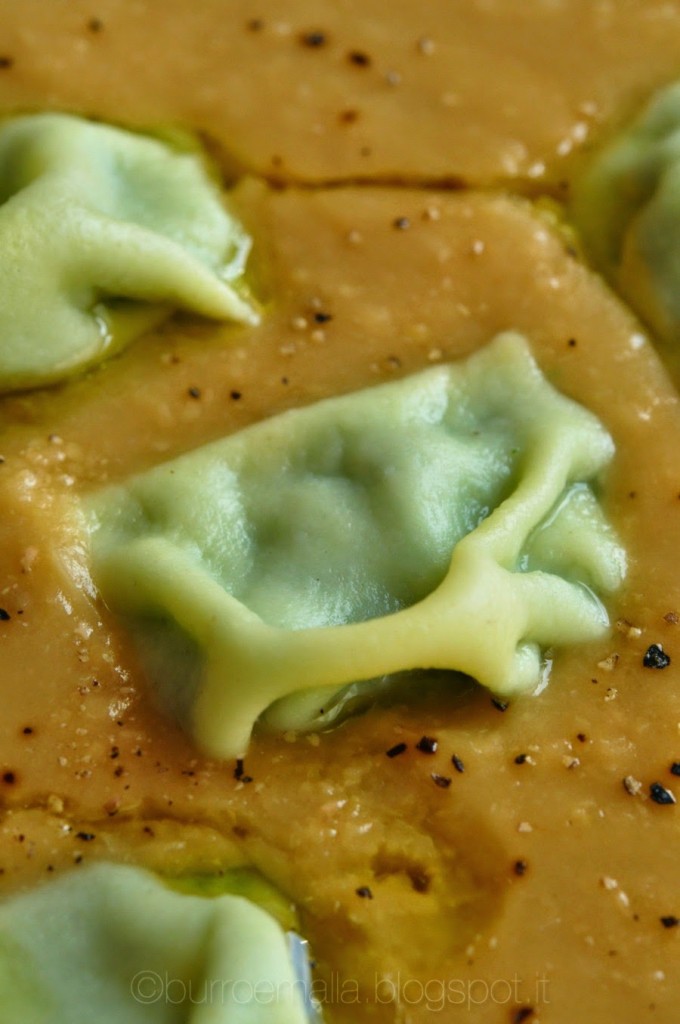Per ogni toscano che si rispetti la minestra di ceci o di fagioli rappresenta il confort food per eccellenza, quello che rimanda con l’immaginazione o a volte per chi è fortunato addirittura con la memoria, a cucine poco illuminate dove la famiglia riunita sotto la cappa del camino nel quale crepitavano grossi ceppi di legna intingeva cucchiai di legno nella minestra densa e calda travasata direttamente dal paiuolo appeso sopra il fuoco. Dopo la minestra venivano spesso le frugiate, un bicchierino di vino e poi c’era qualcuno che si metteva a raccontare storie per il diletto dei più piccoli. Ricordi di una Toscana povera, dove le varie generazioni convivevano sotto lo stesso tetto e alla sera c’era bisogno di mettere tutti a tavola e servir loro qualcosa di caldo ed abbondante ma necessariamente economico. I legumi, come in altre parti dell’Italia la polenta, assolvevano egregiamente al loro compito. Saziavano, si potevano usare in mille modi permettendo così di variare almeno un poco la monotonia dei pasti ed erano proteine a basso costo. L’uso dei legumi si è un pochino perso nel corso degli anni, forse proprio per la connotazione “contadina” dell’alimento, ma poi sono tornati prepotentemente alla ribalta con la scoperta che la carne rossa così bene non faceva e allora ecco andare a ricercare i menù dei nostri nonni che del resto mangiavano quello che mangiavano per impossibilità a reperire altro e certo non per scelta. Io che non mangio carne la sostituisco molto spesso con i legumi che hanno infinite possibilità di lettura specie se si attinge anche alla tradizione di altri paesi, Sud America e mondo arabo in primis. La ricetta di oggi è una crema di ceci alleggerita dal soffritto che si usa di solito nella versione toscana ma arricchita di piccoli raviolini del plin farciti principalmente con spinaci per mantenerli un poco più leggeri ed un olio aromatizzato al rosmarino, aglio e salvia che sono gli ingredienti del soffritto. Chiamiamola pure una rivisitazione di un grande classico della nostra cucina contaminata dall’influenza piemontese dei plin. Un piatto quasi fusion!
Un cucchiaino di conserva per il colore
La sera ammollate i ceci in acqua fredda. La mattina dopo cuoceteli in acqua che salerete ma solo appena prima di fine cottura. Conservate l’acqua che vi servirà per la crema.
Prendete il pezzetto di pasta e procedete alla laminatura. Prima di tutto schiacciatelo con le mani, spolverizzatelo di farina e poi fatelo passare attraverso la sfogliatrice tenendo il rullo più largo possibile quindi ripiegate la striscia su se stessa e fatela passare di nuovo. Ripetete per 8, 9 volte. Stringete il rullo di una tacca e fate passare la striscia di pasta una volta sola per tacca fino ad arrivare a 9. Non fate dei fogli troppo lunghi altrimenti saranno difficili da maneggiare. Infarinate leggermente la parte del foglio che tocca la spianatoia ma non mettete assolutamente farina nella parte alta. Ora rifilate bene i lati del rettangolo usando una rotella tagliapasta o un coltello affilato e poi mettete la striscia davanti a voi in orizzontale. A due cm dal bordo e lungo l’intera lunghezza del lato lungo del rettangolo spremete delle piccole porzioni di farcia a distanza regolare una dalle altre e quindi arrotolatevi la pasta sopra. Fate aderire bene. Una volta che avrete saldato la pasta andate a fare i plin che in piemontese significa pizzicotto separando appunto con un pizzicotto un raviolino dall’altro poi, usando la rotella tagliapasta, rifilate l’eccesso e tagliate in avanti separandoli e formando al tempo stesso una specie di saccottino.
A teaspoon of tomato paste to color
In the evening soak chickpeas in cold water and leave them until the morning when you will cook them in water to which you will add salt only the last 30 minutes before they are done. Keep the water because you will need it for the cream.
When all the plins will be done, put a pan of water to boil and in the meantime, sing a blender or a food processor, puree the chickpeas with the water they have cooked in and the teaspoon of tomato paste. Cook the raviolini, drain them, place them on the hot chickpeas cream you will have put in single portion bowls and season with the flavored oil and black pepper








4 comments
Ma che bella sorpresa il tuo blog! Ho fatto un giretto e trovato già molte cose che stuzzicano l'appetito e la fantasia, come questa crema di ceci che, ti assicuro, spazzolerei senza lasciare la minima traccia.
A presto
Ho fatto anch'io una puntata sul tuo ed ho trovato molte ricette da segnarmi Giulia 🙂
Devono essere sublimi…morbida vellutata di ceci e gustosi ravioli di spinaci! L'abbinamento dev'essere ottimo! 😛
A parte la ricotta Mari, quasi una ricetta delle tue..